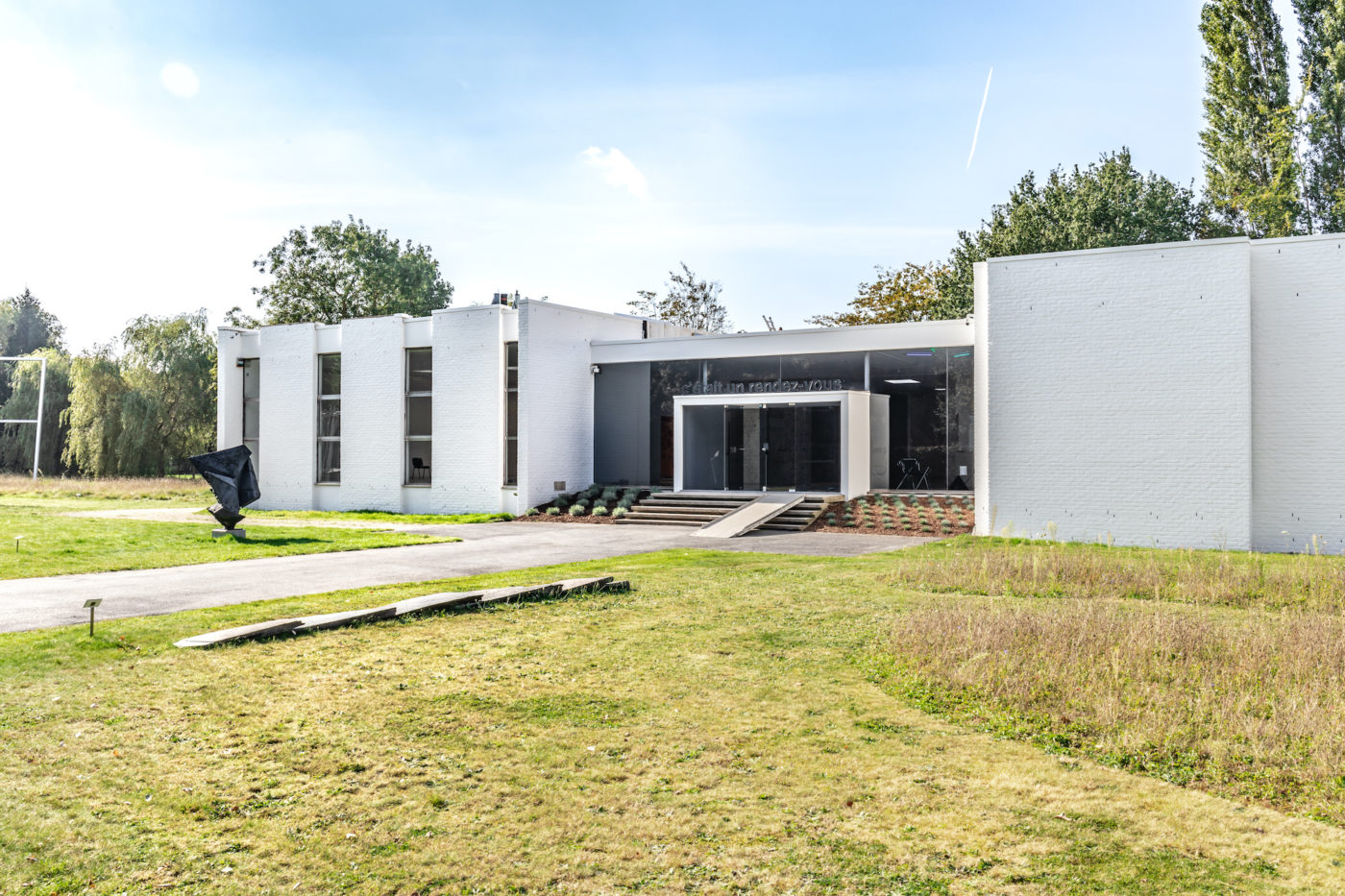Museum Dhondt-Dhaenens
Museumlaan 14
9831 Deurle
+32 (0)9 330 17 30
Wednesday—Sunday
10:00 AM—5:00 PM

The laying of the foundation stone in 1967 marked the start of the construction of a unique and modernist building, situated between the meanders of the Lys on an adjacent plot of land next to the villa of Jules and Irma Dhondt-Dhaenens in Deurle. The elongated and simple volume was designed by architect Erik Van Biervliet (1938–1996) and is an early example of modernist architecture in Belgium after the Second World War. It was one of his first assignments as an independent architect and he continued to favour simplicity.
The brick volume of the patio hall has recessed and recessed walls and allowed the installation of narrow and gable-high windows for a unique and characteristic incidence of light. The crisp white building enters into an immediate dialogue with its wooded and ever-changing surroundings without being intrusive. The interior is open and the various rooms flow into each other, receiving natural light from the different domes in the ceiling.